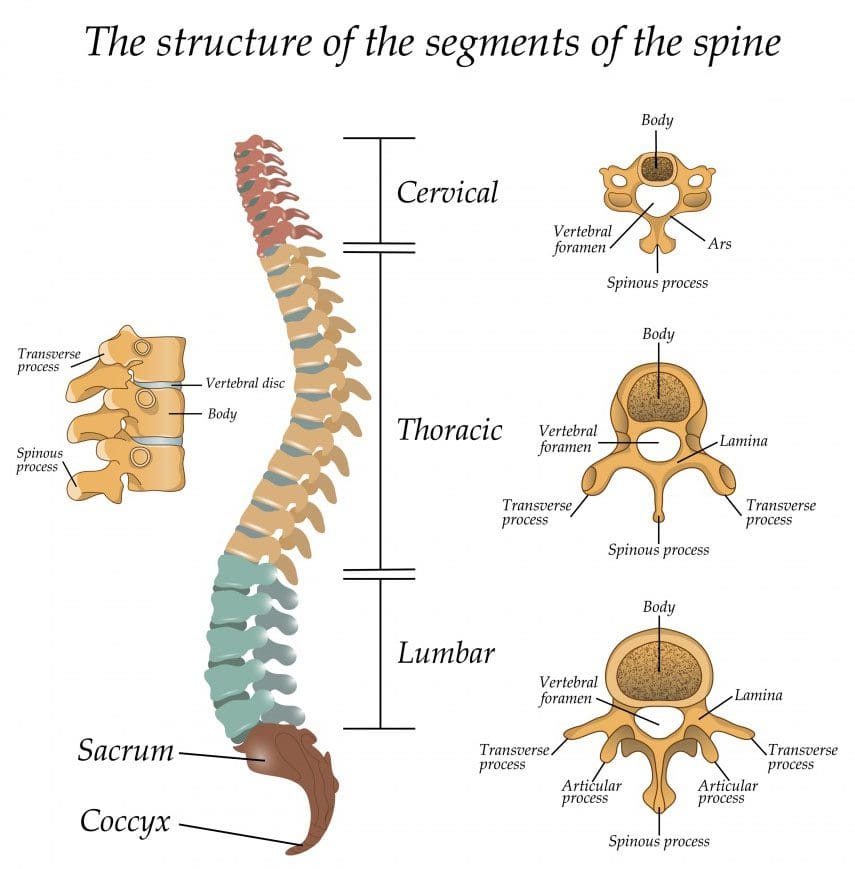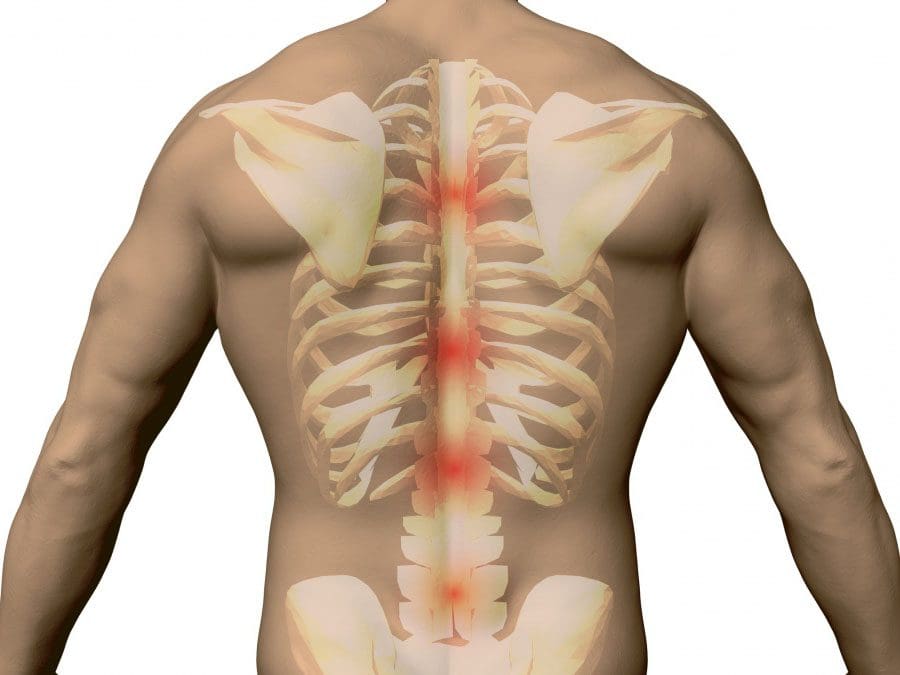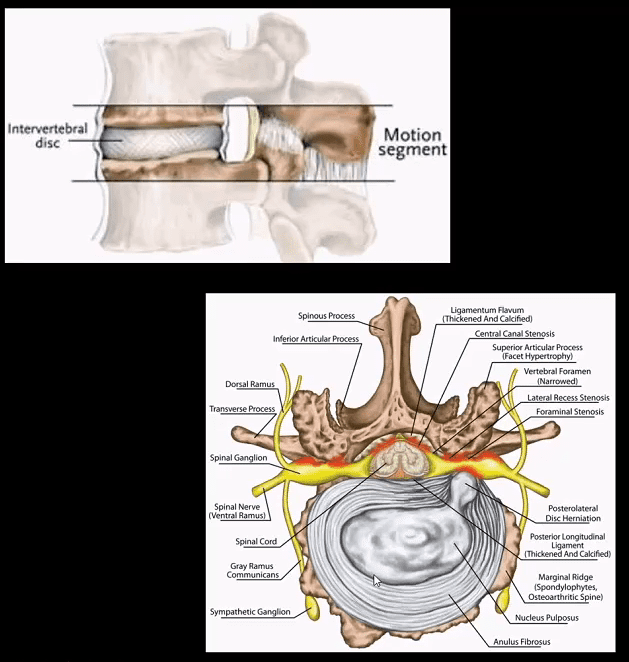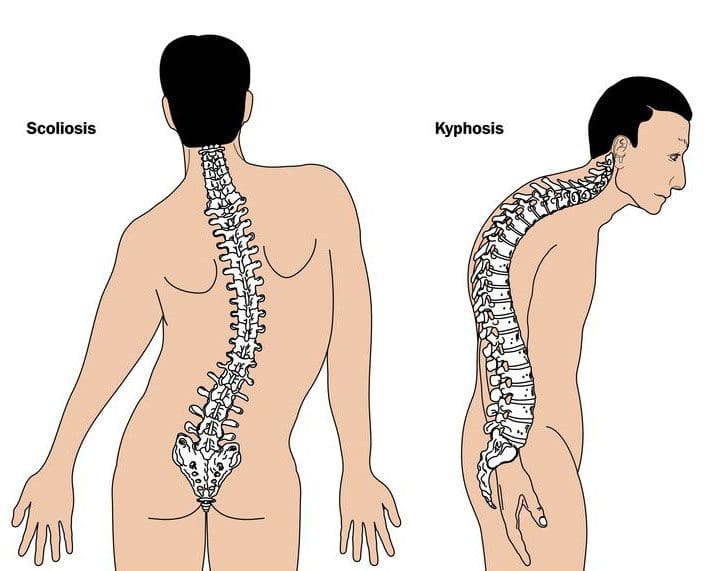The thoracic spine known as the middle back starts below the cervical or neck spine at around the level of the shoulders. It continues down to the first level of the low back or lumbar spine. There are twelve vertebrae, numbered T1-T12 top to bottom, and it is these vertebrae that make up the thoracic spine. When seen from the side, a normal forward curve can be seen.
The ribs are attached to the thoracic spine’s vertebrae making this region of the spine strong and stable. However, this area has less range-of-motion than the neck region. Because of its location, the thoracic spine deals less with injury/s than other areas of the spine. But it is the most common area for fractures from osteoporosis. Scoliosis and abnormal kyphosis are also thoracic spine disorders.
Getting to know the body's spine and how it functions can help individuals have a better and thorough understanding of possible causes to upper and middle back pain, a doctor’s diagnosis, and the reasons for how simple lifestyle changes/choices can keep the middle back, as well as, the rest of the spine healthy.
Thoracic Support
The thoracic spine gives support to the torso, chest and provides an attachment point for each of the rib bones, minus the two at the bottom. The vertebral bodies are rounded with bony arches that project from the back of each and form a hollow protective space for the spinal cord. Facet joints are paired at the back of each and allow for limited movement.
Intervertebral Discs
There is a fibrous pad called an intervertebral disc that is held in place by the endplates between each level’s upper and lower vertebral bodies. Each disc acts like a spacer creating disc height/space between the upper and lower vertebrae. This space opens nerve passageways called a foramen or neural foramina at both sides. Nerve roots branch off the spinal cord and exit the canal through the neural foramina.
Soft Support Structures Limited Movement/s
The entire spinal column consists of:
- Ligaments
- Tendons
- Muscles
These soft tissues attach to the bones, the discs, and work together to stabilize the midback when resting and when in motion. Ligaments are the strong bands of tissue that connect/protect the vertebrae, discs, provide stability, and help with excessive movement. Muscles hold the body upright and allow spinal flexion which is bending forward, extension bending backward, and rotation twisting from side to side. And the tendons are fibrous tissues that attach the muscle/s to the bone.
Nerves Role
The twelve pairs of nerve rootlets that branch off the cord through the neural foramen are to supply and generate sensation/feeling along with function/movement to the body. These nerves provide nutrients to the midback and chest area and relay signals between the brain and major organs, including:
- Lungs
- Heart
- Liver
- Small intestine
Spinal Disorders
- Osteoporosis raises the chances of a thoracic fracture. A vertebral compression fracture can cause one or more bodies of bone to flatten or become wedge-shaped creating spinal cord/nerve compression. Sudden and severe back pain can be associated with vertebral compression fractures.
- Scoliosis is an abnormal side to side curvature of the spine and is well known to develop in the thoracic spine causing deformity.
- Abnormal kyphosis means the forward curvature has become extreme. The appearance of a kyphotic deformity can be seen as a hump.
Types of kyphosis:
- Congenital or appearing at birth
- Posture related
- Scheuermann’s disease
- Metastatic cancer where it travels from the chest, or lung causing spinal tumor/s that can develop and potentially lead to structural deterioration
- Thoracic disc herniations are not common because of the middle back's strength and stability created by the ribcage.
Spine Maintenance
Talk with your doctor, chiropractor, spine specialist about stretches and exercises that will work for your specific situation to strengthen the core, and middle back musculature. This will help significantly with injury prevention during flexion, extension, and rotation.
- Pay attention to posture
- Learn to use proper body mechanics
- Quit smoking/vaping
- Healthy diet
- Learn about the risks for osteoporosis and talk with your doctor about a preventive bone maintenance plan.
Back Pain Therapy
Dr. Alex Jimenez’s Blog Post Disclaimer
The scope of our information is limited to chiropractic, musculoskeletal, physical medicines, wellness, and sensitive health issues and/or functional medicine articles, topics, and discussions. We use functional health & wellness protocols to treat and support care for injuries or disorders of the musculoskeletal system. Our posts, topics, subjects, and insights cover clinical matters, issues, and topics that relate and support directly or indirectly our clinical scope of practice.*
Our office has made a reasonable attempt to provide supportive citations and has identified the relevant research study or studies supporting our posts. We also make copies of supporting research studies available to the board and or the public upon request. We understand that we cover matters that require an additional explanation as to how it may assist in a particular care plan or treatment protocol; therefore, to further discuss the subject matter above, please feel free to ask Dr. Alex Jimenez or contact us at 915-850-0900. The provider(s) Licensed in Texas& New Mexico*








